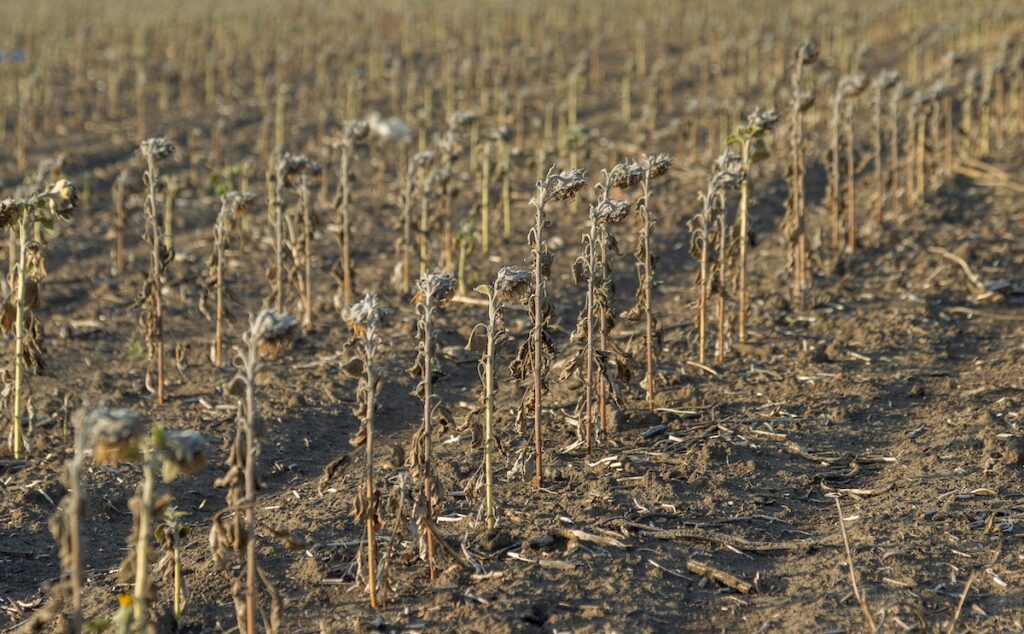Destruction and Death: As Resources Are Wasted, Mass Violence Will Rise
New York Times
As the Clinton administration develops foreign and defense policies for a quickly changing world, it should consider the long-term links between the planet’s ecological balance and mass violence.
Within the next fifty years, earth’s human population will probably pass nine billion, and global economic output may quintuple. Largely as a result, scarcities of renewable resources will increase sharply. Human beings will face a drop in the total area of rich agricultural land, along with the loss of much of the planet’s remaining virgin forests. Coming generations will also see the ongoing depletion and degradation of aquifers, rivers, and other water resources, the decline of fisheries, further stratospheric ozone loss, and, perhaps, significant climate change.
For several decades, a number of analysts have warned that such scarcities could precipitate violent civil or international conflict. But a full debate has been limited by lack of carefully compiled evidence. We therefore brought together a team of thirty researchers from four continents to study a series of specific case studies.
The evidence they gathered points to a disturbing conclusion: scarcities of renewable resources are already contributing to violent conflicts in many parts of the developing world. Moreover, these conflicts may foreshadow a surge of similar violence in the coming decades, particularly in poor countries where shortages of water, forests, and, especially, fertile land are already producing terrible human hardship.
Our research showed that grave land scarcity in Bangladesh, produced in part by rapid population growth, has caused many millions of people to migrate to the Indian states of Assam, Tripura, and West Bengal. This has triggered brutal ethnic conflicts in the receiving regions. In China, we estimate that current environmental damage is already costing the country at least 15 percent of its GDP, and the burden is certain to become much worse. Combined with continued population growth, the Chinese state will be weakened, making it less able to manage the country’s internal affairs and raising the chance of social disintegration. We can also expect domestic strife from the movement of huge numbers of people from China’s ecologically devastated interior to its booming coastal zones.
In the Philippines, a persistent insurgency is given extra impetus by the desperate poverty arising from degraded forests and soils in upland areas. In the Jordan River basin, severe scarcities of groundwater are reinforcing an unequal distribution of water resources between Israelis and Palestinians. This in turn contributes to declining Palestinian agriculture and an economic crisis for West Bank Arabs, which could undermine efforts to reach a peace settlement.
In South Africa, the white regime’s past apartheid policies have concentrated millions of blacks in the country’s most ecologically sensitive territories. Wide swaths of these black homelands have been stripped of trees for fuel wood, grazed down to bare dirt, and eroded of top soil. This resource loss contributes to migration to South African cities and to the rapid growth of urban squatter settlements that are rife with violence.
Expanding populations, land degradation and drought in Senegal and Mauritania helped spur an extremely violent conflict over irrigable land in the basin of the Senegal River, resulting in tens of thousands of refugees. The same factors stimulated the growth of the Sendero Luminoso insurgency in the southern highlands of Peru. In Haiti, the irreversible loss of forests and soil in rural areas deepens an economic crisis that spawns brutal social strife and an exodus of boat people.
Skeptics sometimes argue that conflict arising from scarcity is not particularly interesting because it has been common throughout human history.
We maintain, though, that renewable resource scarcities of the next fifty years will probably occur with a speed, complexity, and magnitude unprecedented in history. Whole countries can now be deforested in a few decades; most of a region’s topsoil can disappear in a generation; and acute ozone depletion may occur in as little as twenty years. Moreover, unlike nonrenewables — including fossil fuels and iron ore — the stocks and flows of renewable resources are linked together in highly complex, interdependent systems. The over-extraction of one resource can lead to multiple, unanticipated environmental crises and sudden scarcities as the system passes critical thresholds.
Our evidence also suggests that future violence influenced by environmental change will not follow the traditional pattern of resource conflicts. Prior to and during World War II, for example, Japan sought to secure oil, minerals and other resources in China and Southeast Asia, and Saddam Hussein’s invasion of Kuwait was at least partly motivated by a desire for oil.
By contrast, many of today’s threatened renewable resources are held in common — including the atmosphere and the oceans — which makes them unlikely to be the object of straightforward clashes. Also, we now understand that scarcities of renewable resources often produce insidious and cumulative social effects, such as large migrations and economic disruption. These events can, in turn, lead to clashes between ethnic groups as well as to civil strife and insurgency. While not as conspicuous or dramatic as scarcity wars, these diffuse, persistent and subnational conflicts may seriously affect the security interests of rich and poor countries alike.
We have found that environmental damage usually contributes to conflict by interacting with other factors causing resource scarcity, such as population growth and inequitable shifts in resource distribution among domestic groups. And the links between scarcities of renewable resources and conflict are rarely tight. Many intervening factors — technological, political, economic, and cultural — permit great resilience, variability, and adaptability in human-environmental systems. But intervening and proximate factors should not distract our attention from how such scarcity can establish the underlying conditions, or “set the stage,” for conflict.
What can be done to ease these pressures? While circumstances differ across the developing world, in general poor countries must act to control population growth, they should try to implement a more equitable distribution of land and wealth within their societies, and they should encourage ecologically sustainable economic growth.
Rich countries have a key role too. They need to reduce the debt burden on developing nations, and assist, through aid and transfers of appropriate technology, environmentally sound industrialization projects to absorb surplus labor. Under pressure from banks and international lending agencies to pay their external debts, poor countries often use their best lands to grow export crops. When this combines with swelling populations, large numbers of people are displaced to increasingly unmanageable cities and ecologically vulnerable areas, like steep hillsides. Ideally, land reform coupled with labor-intensive industries would boost rural incomes and help stem this flow.
Without aggressive action to address the processes behind rising scarcities of renewable resources in poor countries, we can expect many more conflicts of the type we have described here. The international community will find itself confronted with increasingly unmanageable violence. The time to act, therefore, is now. Scholars, policy analysts, and the new administration would be wise to take heed.

Drought in crop field
Topics
Conflict
Energy
Environmental Stress and Conflict
